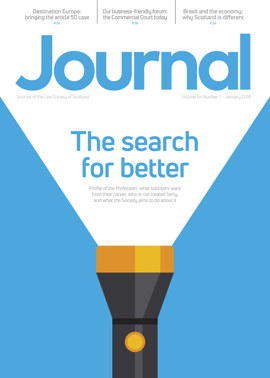Entrepreneurs' relief: tightened too far?
One of the headlines to come out of the Budget on 29 October was the announcement of restrictions on entrepreneurs’ relief.
Entrepreneurs’ relief reduces the capital gains tax payable by individuals on gains realised on certain disposals, including the disposal of shares in companies, to just 10%, subject to a number of conditions. There is a lifetime limit on entrepreneurs’ relief of £10 million. Typically, gains on the sale of shares which are above the limit or which do not qualify are subject to 20% CGT.
Two significant changes made in the Budget introduced further hurdles to be cleared by those looking to claim the relief: first, the shareholder must now also have 5% economic ownership of the company, and secondly, the minimum holding period will be extended.
Economic interest
Prior to 29 October 2018, individuals could qualify for the relief if their economic interest in the shares being sold fell below 5%, because the rules only required shareholders to hold 5% of the voting rights and 5% of the ordinary shares by nominal value. From 29 October 2018, shareholders looking to qualify for entrepreneurs’ relief must now also have a 5% economic interest in the company; this means that they must have the right to 5% of the profits available for distribution to equity holders and to 5% of the assets available for distribution to equity holders on a winding up of the company.
This change will adversely affect shareholders who have held shares with 5% of the voting rights but without 5% of the economic rights in the company (for example holders of growth shares that do not carry entitlements to dividends may not satisfy the economic ownership requirement).
It will prove problematic for a company looking to assure shareholders that entrepreneurs’ relief is available unless a thorough review of its structure and documents is undertaken. This is because the definition of equity holders used in the 5% tests (found in s 158 of the Corporation Tax Act 2010) has the capacity to include holders of certain types of debt, including loan notes. It may therefore now be less than clear whether a shareholder who on the face of it has 5% actually meets the relevant tests. Shareholders should therefore review the waterfall set out in the articles of association and financing of the company to determine whether they will be able to claim entrepreneurs’ relief on a future disposal.
Holding period
In addition, the period for which a shareholder looking to take advantage of entrepreneurs’ relief must meet the relevant conditions will be extended from one year to two years. This change will only affect disposals on or after 6 April 2019.
The extended period also now includes any period during which a shareholder is a sole trader or partner in an unincorporated business, if that business subsequently becomes an incorporated company. This measure corrects the previous perceived unfairness that the entrepreneurs’ relief holding period only started running from the date of incorporation, irrespective of how long the shareholder had previously owned the business in its unincorporated form.
Implications
The restrictions are arguably another example of HMRC strengthening its hand in respect of the UK’s tax revenue. Entrepreneurs’ relief costs the exchequer approximately £2.5 billion a year, so it is no surprise HMRC has moved to restrict its scope, particularly with the additional 5% tests. Entrepreneurs will however argue that they add much greater value.
It is also possible to argue that in its pursuit of greater tax revenue and clamping down on avoidance, HMRC has ignored genuine commercial concerns. Many legitimate enterprises are structured so that shareholders with less than a 5% economic interest in the company benefit from entrepreneurs’ relief – for example, founding investors frequently offer venture capital investors distribution waterfalls in articles that favour the fund. These hastily introduced measures would have benefited from consultation to ensure that entirely commercial situations were not caught, but it is clear HMRC did not want to wait and the result is a significantly restricted relief.
In this issue
- Brexit: prepare for impact
- Continuity and compatibility
- The Disability Convention: clearing obstructions
- Policing review: the priorities
- Five investment practicalities for lawyers managing trusts
- Reading for pleasure
- Opinion: Aamer Anwar
- Book reviews
- Profile: Serena Sutherland
- President's column
- People on the move
- Lifting the lid on the law
- The article 50 case: how it happened
- Forum for business
- Relevant persons: an alternative
- Three ways to enhance digital innovation
- Brexit north of the border
- Roberton – a way forward?
- Interest that runs for years
- Minimum pricing: what next?
- A bill not as planned
- Consumer contracts, choice of law and time bar
- Entrepreneurs' relief: tightened too far?
- Scottish Solicitors' Discipline Tribunal
- In the name of justice
- Views from the bar
- Design the Journal front cover!
- Public policy highlights
- OPG update
- Police station interview training – an update
- Easier caution with Marsh online service
- Fantastic locums – and where to find them!
- Navigating competencies
- C1s – why they bounce
- Conference content?
- Turn on the black box
- Ask Ash






